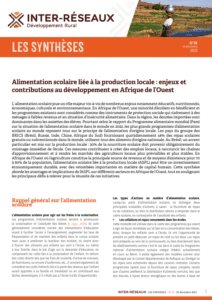As livestock becomes increasingly recognized for its significant contribution to Gross Domestic Product (GDP) and exports, this report investigates the practice of pastoralism in Sudan. The authors delineate migration patterns, rationales, and market strategies, and offer recommendations for policymakers and service providers interacting with communities that practice pastoralism. This study finds:
- Herders do not follow individual rainfall events nor do they always pursue land with the most feed available. Rather, they exploit cycles of plant growth and die-back by moving to areas with the highest quality feed whenever possible, and to areas with the most feed when food is scarce
- The Southern Rizeigat and Dinka Malual pre-migration conferences and meetings have been hugely successful as a forum for avoiding conflict by negotiating access between pastoralists and farmers
- Tribal administration plays a crucial role in preserving pastoralist mobility, thereby improving livelihoods and reducing conflict







